Natural fires that have erupted in various regions around the world have existed for decades or even centuries.
The Door to Hell – Turkmenistan

The massive Darvaza gas crater is located in the Karakum Desert of Turkmenistan. In 1971, Soviet geologists accidentally created the crater while exploring the terrain. The drilling rig mistakenly penetrated a gas pocket, prompting the engineers to ignite the area to prevent the release of toxic gas. Although the accident did not result in any fatalities, a large amount of methane began to seep to the surface. Instead of allowing the methane to accumulate to dangerous levels, the team decided to burn off the escaping gas. Contrary to expectations that the flames would extinguish after a few days, they have been burning continuously for over 50 years.
Yanartas – Turkey

Yanartas is an area near the Olympus Valley in southwestern Turkey, known for its year-round flames. The eternal flames here are located near the ruins of an ancient temple dedicated to Hephaestus, the Greek god of blacksmiths and fire. These flames have been burning continuously for at least 2,500 years, believed to be due to the influence of the rare metal Ruthenium. Visitors describe the area as resembling hell on Earth at night.
Yanar Dag – Azerbaijan
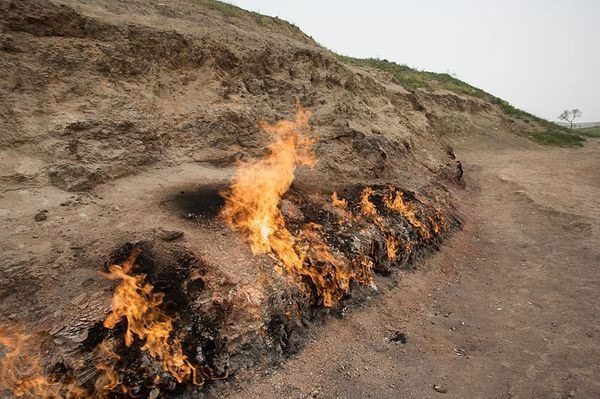
Yanar Dag, also known as the Burning Mountain, stands approximately 116 meters tall. This mountain is located on the Absheron Peninsula, about 25 kilometers northeast of Baku, Azerbaijan. Unlike other mud volcanoes in Azerbaijan, Yanar Dag does not produce mud or liquid; it burns due to natural gas leaking from the porous sandstone on the hillside above the Absheron Bay. The fire wall, measuring 10 meters long, almost never goes out, with flames reaching heights of up to 3 meters. The air here is always filled with the scent of gas due to the continuous flames.
Erta Ale – Ethiopia

The “Smoking Mountain” is the name given in the Afar language to a shield volcano that rises 613 meters above the Ethiopian desert. Its notable feature is the active lava lake located in the caldera of the mountain. According to scientists, this is a rare phenomenon with only six such instances recorded on the planet. Erta Ale is recognized as the longest-lasting lava lake in the world. Also referred to as the “Gateway to Hell,” the lava lake of Erta Ale was discovered in 1906, with a cycle that includes cooling, forming a black crust, and erupting flames up to 3.96 meters high.
Eternal Flame Falls, Shale Creek Preserve, New York, USA
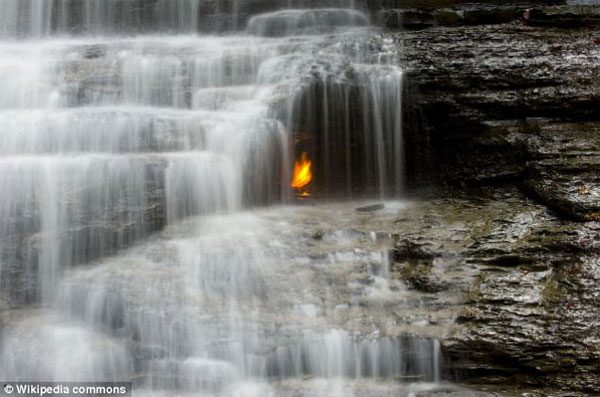
One of the most famous eternal flames in the world flickers in a small cave behind the 10.7-meter high Eternal Flame Falls in Shale Creek Preserve, according to Interesting Engineering. The flame, which stands about 20 cm high, has been burning for thousands of years. Researchers are still unsure about the consistent fuel supply for this eternal flame. However, they believe that some geological process regularly releases natural gas from the shale at a depth of 400 meters. Inside the cave, the small flame can be observed for most of the year, even burning during winter when the waterfall freezes. Occasionally, it may be extinguished and need to be relit.
The natural flame in New York is classified as rare and remains a mystery to the scientific community.
Centralia – USA
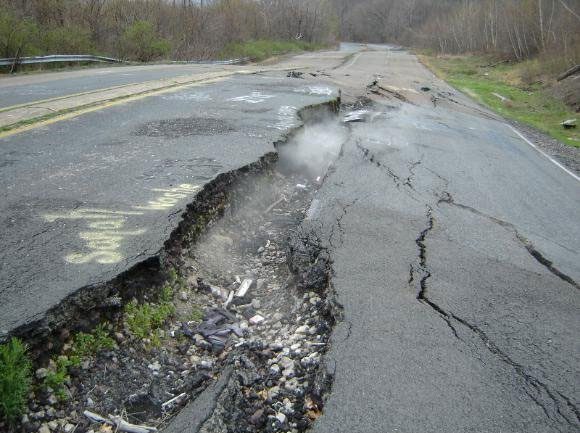
Centralia, a town in Columbia County, Pennsylvania, once housed over 1,000 residents. It became a “ghost town” after a fire in an underground coal mine became uncontrollable, forcing nearly the entire population to evacuate in 1984. The fire is believed to have ignited in 1962, but it took decades for residents to realize its tangible impacts on their lives. Today, the town’s population is down to about 10 people. Experts predict that the fire could continue to burn for another 250 years.
Guanziling – Taiwan
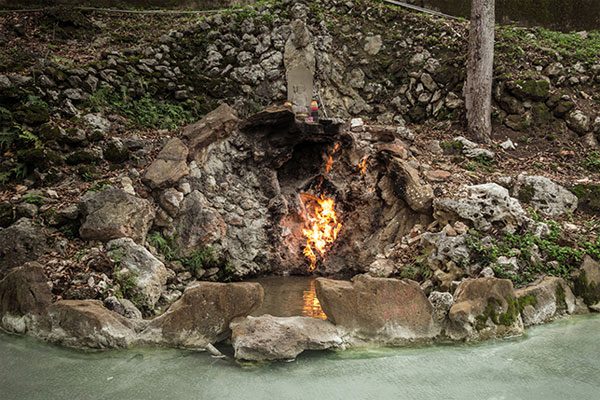
The town of Guanziling in Tainan City is situated along a fault line that contains methane gas, which often escapes into the atmosphere through cracks in the Earth. In this cave (photo), methane from hot springs provides fuel to keep the flames burning. According to legend, the flames have been burning for 300 years.
Baba Gurgur – Iraq
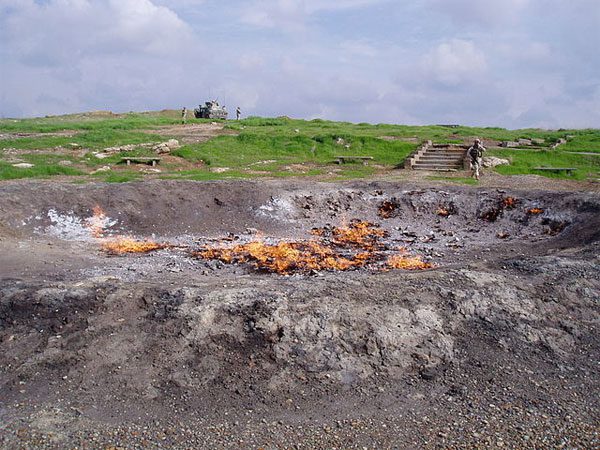
The oil field at Baba Gurgur is one of the largest in the world, discovered in northern Iraq in 1927. Beyond providing energy, Baba Gurgur is also an important cultural and spiritual site for the local population. In ancient times, expectant mothers often visited here to pray for their children’s well-being.
Fires in the Jharia Coalfield, India

Coal mining in this region dates back to the late 1800s, with the first reported fire occurring in 1920. From 1970, when mining companies shifted from underground mining to open-pit mining (exposing coal to oxygen and making it easily combustible), coal fires became a serious issue.
Bituminous coal can even ignite spontaneously at 40oC (104oF).
When fires grow large enough, they consume the ground, destroying homes and even railways. In 1995, underground smoldering fires spread to the riverbank, causing a wall to collapse, flooding the mining area and resulting in the deaths of 78 miners.
Flames in the Jwalamukhi Temple, India

There are many legends surrounding natural flames, but none are as brutal as the Hindu tale of the immortal flame in the Jwalamukhi Temple. It is said that Prajapati Daksha humiliated his daughter Sati at a feast, causing the princess to be so distraught that she self-immolated to avoid shame.
In revenge for his beloved, the god of death Shiva beheaded Daksha and wandered the world with the charred body of his deceased lover. Eventually, the god Vishnu sliced Sati’s body into many pieces and scattered them across the earth. Her tongue fell into the Jwalamukhi Temple, concentrating all her power into a single flame.
Thus, the Jwalamukhi Temple worships the Goddess of Light. The temple is located about 50 kilometers from Dharamshala, India, and visitors can see blue flames burning due to natural gas in the pathway leading up the mountain. There are no idols inside the temple; only the flame is worshiped.
Mount Wingen, Australia
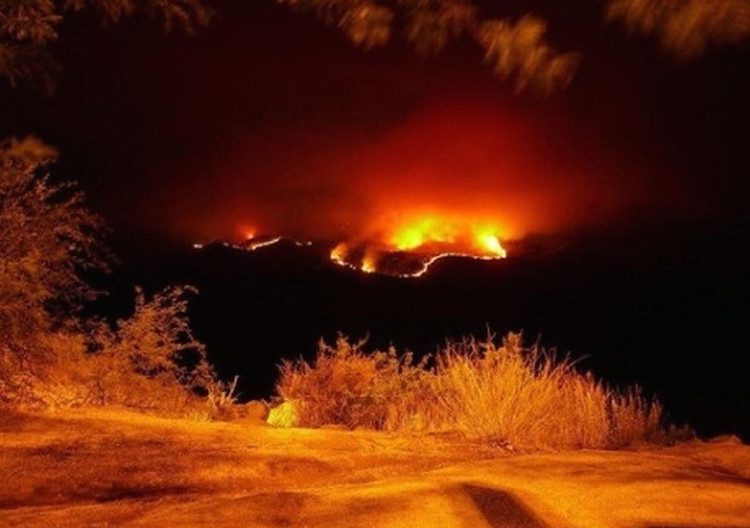
Underground coal fires create the Mount Wingen volcano near the town of Wingen, New South Wales, Australia. The cause may be due to lightning strikes or spontaneous combustion of coal. Locals report that this mountain has been burning continuously for 6,000 years. Paleontologists suggest that this could be the longest-known burning coal phenomenon in history.
Every year, the underground fire spreads approximately 1 meter to the south, and this blaze has extended at least 6 kilometers since it began. At this rate, in the next 255,000 years, it will reach the outskirts of Sydney, covering a distance of about 280 kilometers.





















































